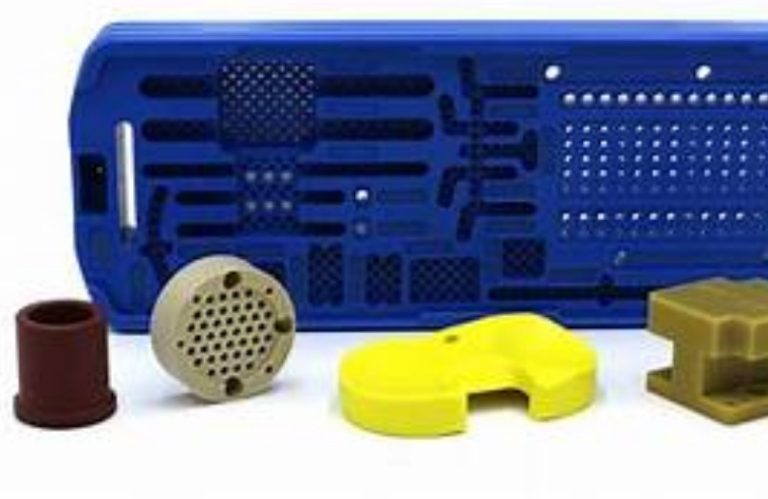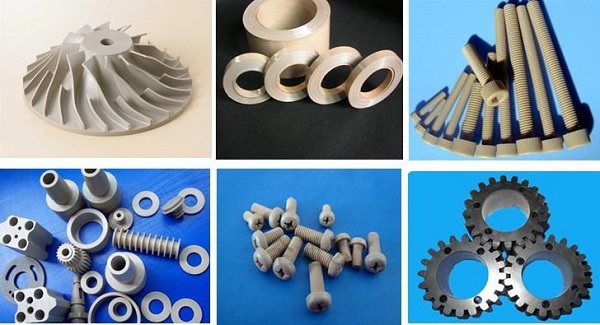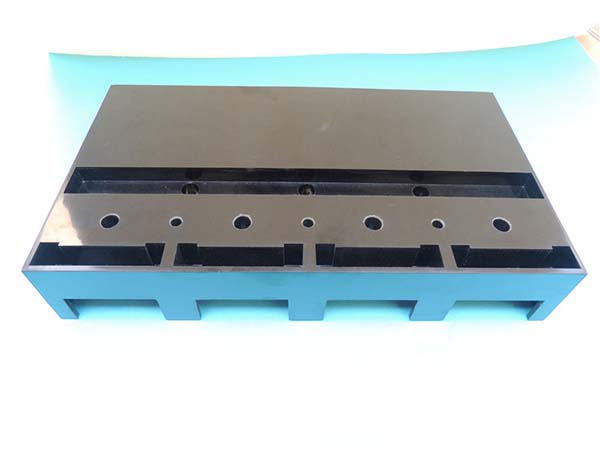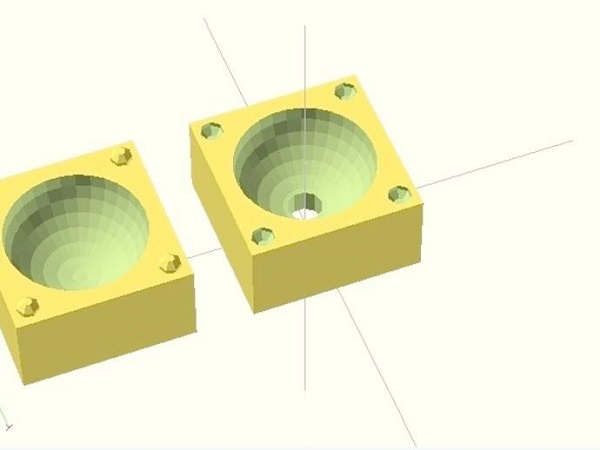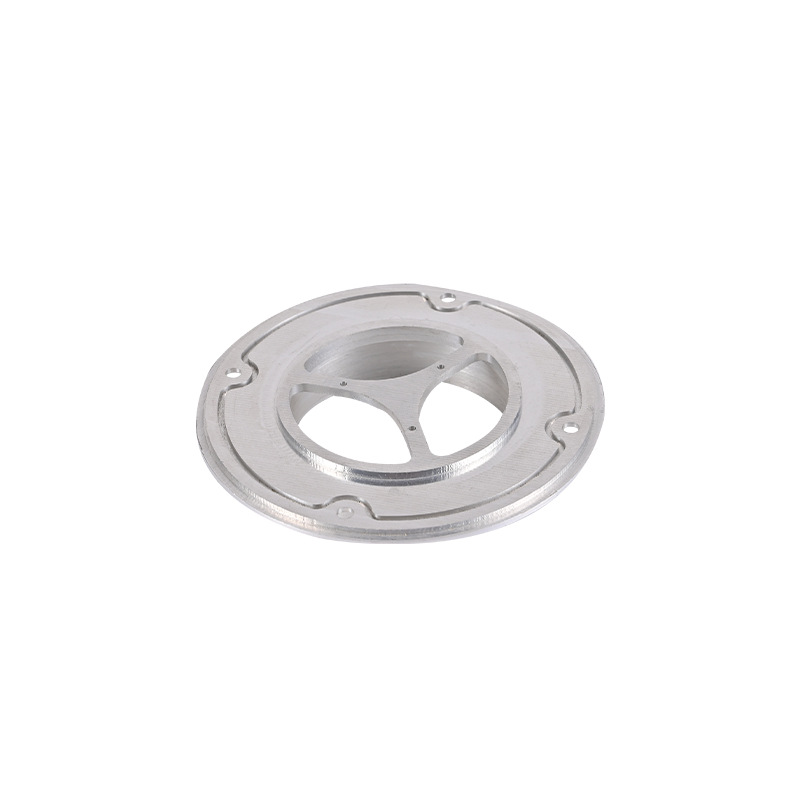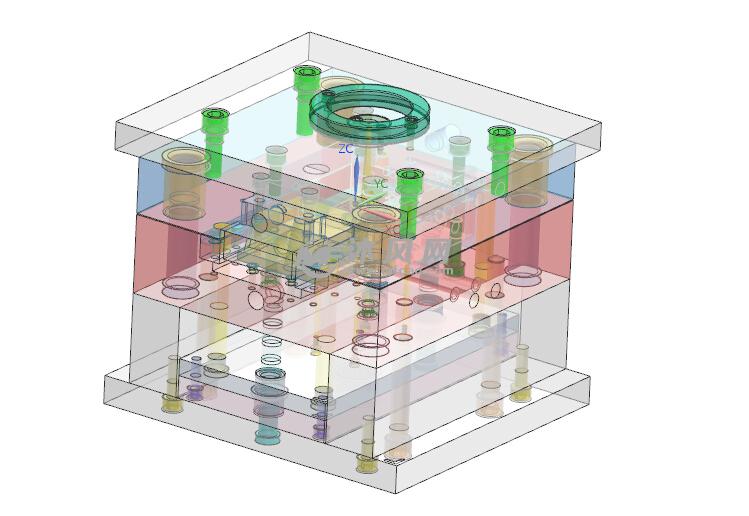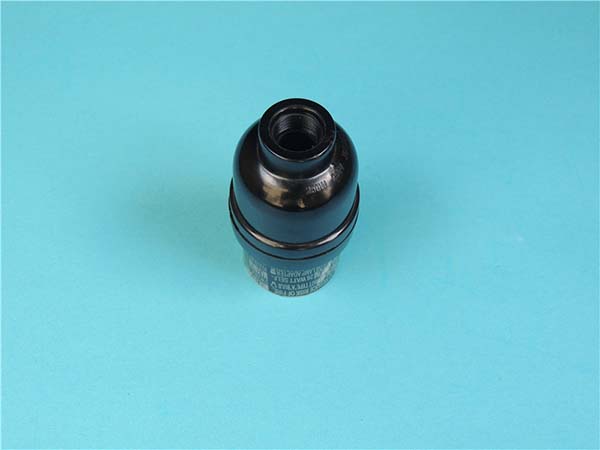What is Rapid Tooling in Additive Manufacturing?
Rapid Tooling in additive manufacturing is a revolutionary approach that combines the speed and flexibility of 3D printing with the functionality of traditional tooling. Additive manufacturing, also known as 3D printing, involves creating three - dimensional objects by layering materials, such as plastics, metals, or composites, based on a digital model. Rapid Tooling, on the other hand, is the process of quickly producing tools or molds that are used in manufacturing processes.
When these two concepts are merged, rapid tooling in additive manufacturing allows for the rapid production of customized tools. For example, instead of spending weeks or months machining a metal mold through traditional subtractive manufacturing methods, additive manufacturing can produce a similar mold in a matter of days. This is because 3D printers can build complex geometries layer by layer directly from a CAD (Computer - Aided Design) file.
One of the key aspects of rapid tooling in additive manufacturing is its ability to create highly customized tools. Traditional tool - making often involves significant upfront costs for tool design and setup. In additive manufacturing, changes to the tool design can be made easily in the digital model, and then the updated tool can be printed immediately. This makes it ideal for small - batch production, prototyping, and for creating tools with complex internal channels or geometries that would be difficult or impossible to achieve with traditional manufacturing techniques.
For instance, in the automotive industry, rapid tooling using additive manufacturing can be used to quickly produce injection molds for manufacturing small - scale production runs of custom - designed automotive parts. These molds can be printed with internal cooling channels optimized for faster cooling times, reducing the overall production cycle of each part.
Types of Rapid Tooling in Additive Manufacturing
There are several types of rapid tooling in additive manufacturing, each with its own unique characteristics and applications.
Stereolithography (SLA)
Principle: SLA is one of the earliest and most widely used additive manufacturing technologies. It works by using a laser to cure a liquid photopolymer resin layer by layer. A UV laser traces the cross - sectional shape of the part on the surface of the liquid resin. As the laser hits the resin, it causes a photochemical reaction, solidifying the resin and creating a solid layer. After each layer is cured, the build platform is lowered, and a new layer of resin is spread over the previously cured layer, and the process repeats.
Advantages: SLA offers high precision, with the ability to achieve layer thicknesses as low as 0.05 - 0.1mm. It also produces parts with smooth surface finishes, making it ideal for applications where aesthetics and fine details are crucial. Additionally, SLA has a relatively fast build speed compared to some other additive manufacturing methods.
Applicable scenarios: It is commonly used in the production of jewelry molds, where the high precision and smooth surface can accurately replicate intricate designs. For example, a jewelry designer can use SLA to create a mold for a complex pendant with delicate filigree patterns. In the dental industry, SLA is used to make custom dental models for crowns, bridges, and orthodontic appliances. These models need to be highly accurate to ensure a proper fit for the patient.
Selective Laser Sintering (SLS)
Technical characteristics: SLS uses a high - power laser to sinter powdered materials, such as plastics, metals, or ceramics, into a solid object. The powder is spread evenly across a build platform, and the laser selectively heats the powder particles, causing them to fuse together. The un - sintered powder remains in place and acts as a natural support structure during the printing process.
Work process: First, the powder bed is heated to a temperature just below the melting point of the powder material. Then, the laser scans the cross - sectional pattern of the part onto the powder bed, sintering the powder in the desired areas. After each layer is completed, the build platform is lowered, a new layer of powder is spread, and the process continues until the entire part is built.
The application advantages in rapid molds: SLS is well - suited for rapid tooling as it can produce durable and heat - resistant molds. It allows for the creation of complex internal geometries, such as conformal cooling channels in injection molds. These cooling channels can significantly reduce the cooling time of the molded parts, increasing production efficiency. For instance, in the automotive industry, SLS - printed molds with conformal cooling channels can be used to manufacture plastic parts for car interiors, reducing the cycle time of the injection molding process.
Fused Deposition Modeling (FDM)
Operation mode: FDM works by melting a thermoplastic filament, such as ABS, PLA, or nylon, and extruding it through a nozzle. The nozzle moves in a programmed path, depositing the melted material layer by layer to build the three - dimensional object. As the material is extruded, it cools and solidifies, bonding to the previous layer.
Cost-benefit: FDM is a cost - effective option for rapid tooling, especially for low - volume production. The equipment and materials are relatively inexpensive compared to some other additive manufacturing technologies. It also has a low waste rate since any unused filament can be easily reused.
The types of molds suitable for production: FDM is suitable for creating simple molds, such as those for low - pressure casting or vacuum forming. For example, a small - scale manufacturer might use an FDM - printed mold to create custom - shaped plastic parts for a hobby - based product line. The ease of use and low cost of FDM make it accessible for small businesses and hobbyists to produce their own tooling.
Comparison of Rapid Tooling Techniques
To better understand the different rapid tooling techniques in additive manufacturing, let's compare SLA, SLS, and FDM in terms of several key aspects:
| Aspect | Stereolithography (SLA) | Selective Laser Sintering (SLS) | Fused Deposition Modeling (FDM) |
| Precision | High precision, layer thickness as low as 0.05 - 0.1mm, and can achieve minimum feature sizes between 50 - 250μm. Produces parts with very smooth surfaces, suitable for applications requiring high - detail and fine - finish products. | Medium precision. The accuracy depends on the powder material and the equipment. Generally, it can achieve good results for complex geometries, but the surface finish is not as smooth as SLA. | Relatively lower precision compared to SLA and SLS. Limited by the nozzle diameter and layer thickness, it may have a slightly rougher surface finish, especially for small details. However, with proper parameter adjustment and post - processing, it can still meet certain accuracy requirements. |
| Cost | High cost. The equipment is relatively expensive, and the photosensitive resin materials are also costly. Additionally, the maintenance of the SLA equipment may require more investment due to the need for a clean environment to avoid contamination of the resin. | High cost as well. SLS machines are equipped with high - power lasers and advanced shielding technologies, which makes them expensive. The powder materials used in SLS, such as nylon or metal powders, are also relatively costly. | Low - cost option. The FDM equipment is generally more affordable, especially for desktop models. The filament materials, like ABS and PLA, are inexpensive, and there is less waste as unused filaments can be reused. |
| Material Selection | Limited to photosensitive resins. Although there are different types of resins available, such as standard, flexible, and high - temperature - resistant resins, the overall material options are fewer compared to SLS. | Can use a wide variety of powder materials, including plastics (e.g., nylon, polypropylene), metals, and ceramics. This wide range of material choices allows for the production of tools with different properties, such as heat - resistance, high - strength, or corrosion - resistance. | Mainly uses thermoplastic filaments like ABS, PLA, and nylon. Some filaments can also be mixed with other elements, such as wood, metal, or carbon fiber, to achieve specific properties, but the variety is still more limited than SLS. |
| Production Speed | Relatively fast build speed in terms of the number of layers it can complete in a given time. However, the overall production time may be affected by the need for support structures and post - processing steps like resin curing and cleaning. | Fast production speed, especially for large - scale production runs. Since it doesn't require support structures, the build process can be more continuous, and multiple parts can be nested within the build volume, increasing productivity. | Slower production speed compared to SLA and SLS in some cases. The extrusion rate of the filament and the movement speed of the nozzle limit the overall speed. But for simple and small - scale tooling, it can still be a viable option in terms of production time. |
Yigu Technology's Perspective
As a non - standard plastic and metal products custom supplier, Yigu Technology firmly believes in the transformative power of rapid tooling in additive manufacturing. Our expertise lies in leveraging these advanced techniques to offer customized solutions to our clients.
We understand that each project has unique requirements. With rapid tooling in additive manufacturing, we can quickly turn around prototypes and tools, reducing the lead time significantly. Our state - of - the - art equipment and skilled team enable us to work with a variety of materials, whether it's high - strength plastics for lightweight tooling or metals for more durable applications.
Moreover, we focus on the quality and precision of our products. By closely monitoring the additive manufacturing process, we ensure that the final tools meet the highest industry standards. We are committed to helping our clients achieve their production goals efficiently, whether it's for small - scale prototyping or large - scale production runs.
FAQ about Rapid Tooling
What are the main differences between SLA and SLS in rapid tooling?
- Principle: SLA (Stereolithography) uses a laser to cure a liquid photopolymer resin layer by layer. A UV laser traces the cross - sectional shape of the part on the surface of the liquid resin, causing a photochemical reaction to solidify the resin. SLS (Selective Laser Sintering), on the other hand, uses a high - power laser to sinter powdered materials, such as plastics, metals, or ceramics, into a solid object. The powder is spread evenly across a build platform, and the laser selectively heats the powder particles to fuse them together.
- Materials: SLA is mainly limited to photosensitive resins. Although there are different types like standard, flexible, and high - temperature - resistant resins, the material options are fewer. SLS can use a wide variety of powder materials, including plastics (e.g., nylon, polypropylene), metals, and ceramics, providing more flexibility in material selection for different tooling requirements.
- Part Quality: SLA offers high precision, with layer thicknesses as low as 0.05 - 0.1mm, and produces parts with smooth surface finishes, which is great for applications where aesthetics and fine details matter. However, SLA parts need support structures during printing and post - curing treatment, and there may be residual stress affecting the dimensional stability. SLS parts have medium precision. The surface finish is not as smooth as SLA due to the nature of powder sintering, but SLS parts generally have better strength and heat - resistance, and don't require support structures as the un - sintered powder acts as support.
How can I choose the right rapid tooling method for my project?
- Project Requirements: Consider the complexity of the tool design. If it has complex geometries and fine details, SLA might be a good choice for its high precision. For tools that need to withstand high temperatures or require high strength, SLS with its wide range of available materials (including heat - resistant and high - strength powders) could be more suitable. If the tool is a simple structure and cost - effectiveness is a priority, FDM might be sufficient.
- Budget: SLA and SLS equipment and materials are relatively expensive. SLA machines and photosensitive resins, as well as SLS high - power laser - equipped machines and powder materials, involve high costs. FDM, on the other hand, has lower equipment and material costs, making it more accessible for projects with limited budgets.
- Time: If you need a quick turnaround, SLA can be relatively fast in terms of the number of layers it can complete in a given time, despite the need for support removal and post - processing. SLS is also fast for large - scale production runs as it doesn't need support structures, allowing for a more continuous build process. FDM might be slower for complex parts due to its extrusion - based process, but for simple tools, it can still meet time requirements.
What are the common post - processing steps for rapid tooling parts?
- Sanding: After the rapid tooling part is printed, it often has rough surfaces or small imperfections. Sanding helps to smooth the surface. For FDM parts, sanding can reduce the roughness caused by the layer - by - layer extrusion. Different grits of sandpaper are used, starting from coarser grits (e.g., 400#) to remove larger imperfections and then moving to finer grits (e.g., 1200# or higher) for a smoother finish.
- Polishing: This step further enhances the surface smoothness. For SLA parts, which already have a relatively smooth surface, polishing can give them a high - gloss finish. Chemical polishing methods like using acetone vapor for ABS - based FDM parts or specialized polishing liquids can be used.
- Surface Treatment: Depending on the application, surface treatment might be necessary. For example, for tools that need to be corrosion - resistant, a coating such as electroplating (for metal - like parts) or painting can be applied. In some cases, heat treatment can be used to improve the mechanical properties of the part, especially for SLS - printed metal or ceramic parts to relieve internal stress and enhance strength.
